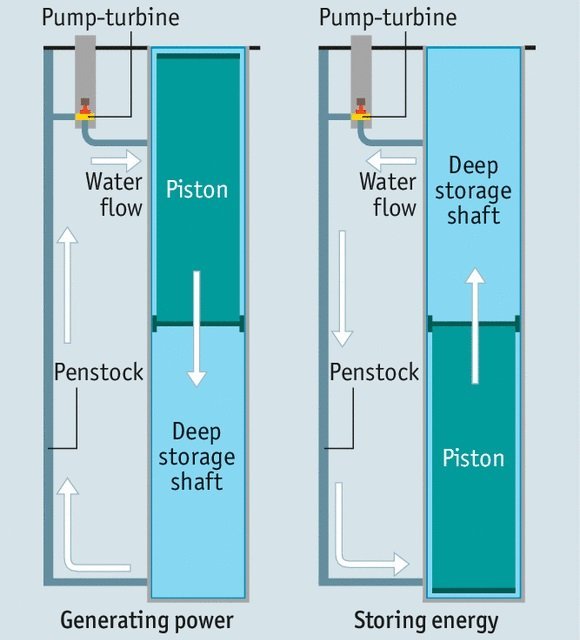 The National Infrastructure Commission (NIC) was launched by then-chancellor George Osborne in October 2015 to “think dispassionately and independently about Britain’s long-term infrastructure needs in areas like transport, energy, communication, flood defence and the like.” Well, the NIC has now thought dispassionately and independently about energy and has concluded that the UK can meet its 2050 decarbonization goals with either a mostly nuclear or mostly renewable generation mix, but that “wind and solar could deliver the same generating capacity as nuclear for the same price, and would be a better choice because there was less risk”. Here we take a brief look at this renewables-beats-nuclear option to see whether it might work.
The National Infrastructure Commission (NIC) was launched by then-chancellor George Osborne in October 2015 to “think dispassionately and independently about Britain’s long-term infrastructure needs in areas like transport, energy, communication, flood defence and the like.” Well, the NIC has now thought dispassionately and independently about energy and has concluded that the UK can meet its 2050 decarbonization goals with either a mostly nuclear or mostly renewable generation mix, but that “wind and solar could deliver the same generating capacity as nuclear for the same price, and would be a better choice because there was less risk”. Here we take a brief look at this renewables-beats-nuclear option to see whether it might work.
The NIC study was brought to my attention in a comment by correspondent Ed T in Blowout Week 236, so a hat tip to Ed T. The data available to me consisted of the NIC report, NIC’s Power Point presentation, the source of most of the data I use, and a summary article from the Guardian. The power sector modeling work was performed by Aurora Energy Research (Aurora).
The NIC “aims to be the UK’s most credible, forward-thinking and influential voice on infrastructure policy and strategy, producing reports and analysis of the highest quality, written in plain English, independent of government and all vested interests, and making clear recommendations based on rigorous evidence; and developing an evidence base which sets a gold standard in its quality and breadth.” Its conclusions are summarized in the Guardian article:
Government advisers have told ministers to back only a single new nuclear power station after Hinkley Point C in the next few years, because renewable energy sources could prove a safer investment. Sir John Armitt, the NIC’s chairman, said: He argued that wind and solar could deliver the same generating capacity as nuclear for the same price, and would be a better choice because there was less risk.
…click on the above link to read the rest of the article…



 After about 15 years in planning, the long awaited and largely hated Aberdeen Bay wind farm has taken shape in recent weeks. I seem to recall early reports saying that the turbines, located on the horizon, would be barely visible from shore. Well that was a lie. The huge towers completely dominate the once unspoiled and beautiful scenery of Balmedie Beach. Those who see this as environmental protection have sick minds. And President Trump, who owns a golf course not far away, and who fought this project in the courts, is going to be mighty angry.
After about 15 years in planning, the long awaited and largely hated Aberdeen Bay wind farm has taken shape in recent weeks. I seem to recall early reports saying that the turbines, located on the horizon, would be barely visible from shore. Well that was a lie. The huge towers completely dominate the once unspoiled and beautiful scenery of Balmedie Beach. Those who see this as environmental protection have sick minds. And President Trump, who owns a golf course not far away, and who fought this project in the courts, is going to be mighty angry. It’s now day 5 of the Energy Externality Game and time to move onto the first of the new renewables, namely wind power. Loved by Green groups who see only reduced CO2 emissions, wind farms are hated by many others who see a blot on the landscape. Here at Energy Matters we normally just see high cost noise being added to a grid that needs to be balanced from second to second with some precision. This high cost noise needs to be mitigated and the cost of that mitigation is normally borne by others, not the wind farm operators.
It’s now day 5 of the Energy Externality Game and time to move onto the first of the new renewables, namely wind power. Loved by Green groups who see only reduced CO2 emissions, wind farms are hated by many others who see a blot on the landscape. Here at Energy Matters we normally just see high cost noise being added to a grid that needs to be balanced from second to second with some precision. This high cost noise needs to be mitigated and the cost of that mitigation is normally borne by others, not the wind farm operators.
 While rummaging around the internet to see if I could find any information on the performance of wind farms in Queensland (and especially in Far North Queensland – Andrew Blakers’ supposed panacea for the rather more correlated wind farm outputs in the NEM area), I came across Thursday Island, which installed a small two turbine wind farm 20 years ago. Thursday Island is about as FNQ as you can get – about 25 miles into the Torres Strait that separates Australia and Papua New Guinea. The bonanza came when I encountered a
While rummaging around the internet to see if I could find any information on the performance of wind farms in Queensland (and especially in Far North Queensland – Andrew Blakers’ supposed panacea for the rather more correlated wind farm outputs in the NEM area), I came across Thursday Island, which installed a small two turbine wind farm 20 years ago. Thursday Island is about as FNQ as you can get – about 25 miles into the Torres Strait that separates Australia and Papua New Guinea. The bonanza came when I encountered a 


 Hinkley still scores on reliability and low carbon ….. but the extent to which its costs are obscene is now plainer than ever. In Monday’s capacity auction, two big offshore wind farms came in at £57.50 per megawatt hour and a third at £74.75. These “strike prices” ….. are expressed in 2012 figures, as is Hinkley’s £92.50 so the comparison is fair. As for the argument that we must pay up for reliable baseload supplies, there ought to be limits to how far it can be pushed. A nuclear premium of some level might be justified, but Hinkley lives in a financial world of its own, even before battery technology (possibly) shifts the economics further in favour of renewables …..
Hinkley still scores on reliability and low carbon ….. but the extent to which its costs are obscene is now plainer than ever. In Monday’s capacity auction, two big offshore wind farms came in at £57.50 per megawatt hour and a third at £74.75. These “strike prices” ….. are expressed in 2012 figures, as is Hinkley’s £92.50 so the comparison is fair. As for the argument that we must pay up for reliable baseload supplies, there ought to be limits to how far it can be pushed. A nuclear premium of some level might be justified, but Hinkley lives in a financial world of its own, even before battery technology (possibly) shifts the economics further in favour of renewables …..




